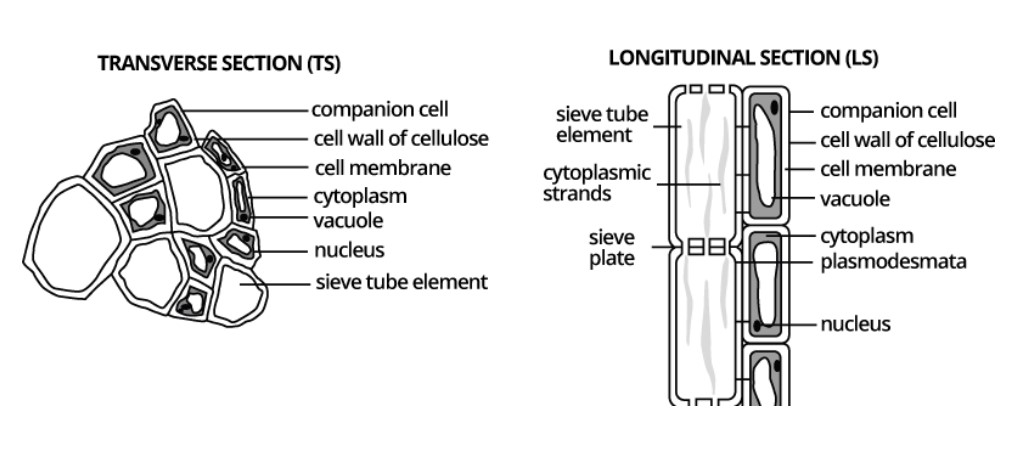Phloem & Translocation
1/8
There's no tags or description
Looks like no tags are added yet.
Name | Mastery | Learn | Test | Matching | Spaced |
|---|
No study sessions yet.
9 Terms
What is translocation?
The transport of soluble organic materials such as sucrose and amino acids.
What is the source?
The site of production (e.g. leaves).
What is the sink?
The site where organic molecules are used in respiring tissues or stored (e.g. roots / shoots / fruits).
What are the 3 main types of cells that make up the phloem?
Sieve tubes
Companion cells
Phloem parenchyma- acts as packaging tissue.
Describe the structure of the phloem.
Phloem is made of living cells.
Phloem sieve tubes contain little cytoplasm and few or no organelles. The cell walls are made of cellulose.
Sieve tubes are formed from cells called sieve elements placed end to end.
The ends of the walls do not break down, but are perforated by pores. These areas are called sieve plates.
Cytoplasmic filaments containing phloem protein extend from one sieve cell to the next through the pores in the sieve plate.
Companion cells have dense cytoplasm, large centrally placed nuclei, many mitochondria, rough endoplasmic reticulum and Golgi body. They are connected to the sieve tube elements by plasmodesmata.

Explain the mass flow theory of translocation.
When sugar is made at the source the water potential becomes more negative and water passes into the source cells by osmosis.
As water enters the source cells, hydrostatic pressure increases forcing sugars and other products of photosynthesis into the sieve tubes – phloem sieve tubes are loaded.
Mass flow occurs along the sieve tubes to the sink, the products of photosynthesis are forced along by the flow of water from a high to a low hydrostatic pressure.
Hydrostatic pressure will be lower at the sink because sugars are stored as starch or are used for respiration; this reduces the water potential.
Water passes from the sink cells to the xylem to be returned to the source.
Give some evidence which argues against mass flow theory.
Theory does not explain the role of sieve plates which seem to prevent flow.
The rate of translocation is 10,000 times faster than it would be if the substances were moving by diffusion.
Sucrose and amino acids move at different rates and in different directions in the same phloem tissue.
Phloem tissue has a high rate of oxygen consumption, and translocation is stopped when a respiratory poison such as potassium cyanide enters the phloem.
Companion cells contain numerous mitochondria and produce ATP, but the mass flow hypothesis fails to suggest a role for the companion cells.
State some alternative hypotheses for translocation.
Electro-osmosis
Cytoplasmic streaming
Protein contraction
All of these alternative theories propose active processes and support the fact that ATP is used along the whole length of a phloem sieve tube and not just at the loading point.
How do you investigate translocation?
*Read Blended Learning WJEC.